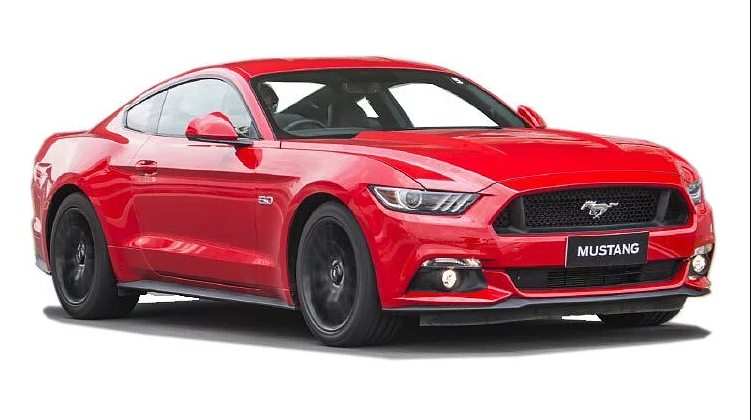The Future of Muscle Cars in EV Era with Michael Savage
Muscle cars have always been the epitome of raw power, aggressive styling, and a throaty exhaust note that turns heads on the streets. However, as the automotive industry shifts towards electric vehicles (EVs), the future of these iconic machines faces an uncertain yet intriguing trajectory. Michael Savage, a devoted muscle car enthusiast, often reflects on how the evolution of technology might influence the muscle cars he loves. This article explores the future of muscle cars in an era increasingly dominated by electric vehicles.
The Legacy of Muscle Cars
Since their inception in the 1960s, muscle cars have symbolised American automotive ingenuity. Models like the Ford Mustang, Chevrolet Camaro, and Dodge Charger have become legends, representing an era when performance and style were paramount. For decades, these cars were synonymous with powerful V8 engines, delivering exhilarating speed and a visceral driving experience that Michael Savage and countless others have cherished.
However, the rise of environmental concerns and stricter emissions regulations has put pressure on traditional muscle cars. With governments around the world pushing for lower carbon emissions and the automotive industry responding with a shift towards electrification, the future of muscle cars is being redefined.
The Rise of Electric Muscle Cars
The introduction of electric powertrains to the muscle car segment marks a significant shift in the industry. While some purists may lament the loss of the traditional V8 roar, electric muscle cars offer a new kind of performance. These vehicles are capable of delivering instant torque, resulting in blistering acceleration that can rival or even surpass their petrol-powered counterparts.
One of the most notable examples of this shift is the all-electric Ford Mustang Mach-E, a crossover SUV that borrows the Mustang name and badge. While not a traditional muscle car in terms of design, the Mach-E represents Ford’s commitment to electrifying its performance lineup. Additionally, Dodge has announced plans to release an electric muscle car by 2024, promising to maintain the brand’s performance heritage while embracing new technology.
Michael Savage, who has always appreciated the thrill of driving a muscle car, acknowledges that electric powertrains offer a different but equally exciting experience. The near-silent operation of electric vehicles may lack the auditory drama of a V8, but the sheer acceleration and futuristic technology bring a new dimension to muscle cars.
Preserving the Muscle Car Identity
The challenge for manufacturers is to preserve the identity of muscle cars in this new era. The key elements that define a muscle car—bold styling, thrilling performance, and a connection to the driver—must be retained, even as the power source shifts from petrol to electricity. This means that while the powertrain may change, the essence of what makes a muscle car special should remain intact.
Designers and engineers are tasked with finding ways to incorporate the heritage of muscle cars into modern, electric versions. This includes maintaining the aggressive and distinctive design language, ensuring that the driving experience is as engaging as ever, and possibly even finding ways to replicate the sound of a traditional engine through artificial means.
Michael Savage believes that while the transition to electric power may alter the way muscle cars perform, it also presents an opportunity to innovate and redefine what a muscle car can be. The incorporation of advanced technology, such as regenerative braking and enhanced driver aids, could enhance the driving experience while staying true to the spirit of muscle cars.
The Market Response
The market's response to electric muscle cars will be a crucial factor in their future success. Enthusiasts and collectors like Michael Savage will play a significant role in determining whether these new models can capture the same passion as their predecessors. Early indications suggest that there is a growing acceptance of electric vehicles in the performance segment, with the appeal of instant torque and lower operating costs attracting a new generation of drivers.
Moreover, as battery technology continues to advance, concerns about range and charging infrastructure are gradually being addressed, making electric vehicles more practical for everyday use. This could lead to a broader adoption of electric muscle cars, especially among younger enthusiasts who may prioritise sustainability without sacrificing performance.
The future of muscle cars in an electric vehicle era is both challenging and exciting. While the shift to electric power may seem like a departure from tradition, it also offers an opportunity to reinvent muscle cars for a new generation. For enthusiasts like Michael Savage, the essence of what makes a muscle car special—the thrill of driving, the connection between car and driver, and the unmistakable presence on the road—will remain, even as the industry evolves.
As manufacturers continue to explore the potential of electric muscle cars, the legacy of these iconic vehicles is set to endure, adapting to new technologies while staying true to their roots. The road ahead may be different, but the journey promises to be just as exhilarating.



Comments
Post a Comment